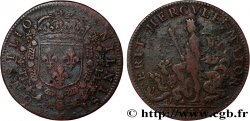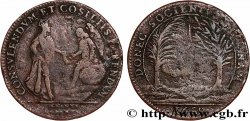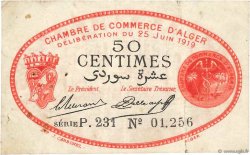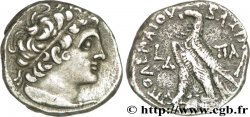MONNAIES 11 (2002)
Начальная цена : 121.96 €
Назначить цену : 304.90 €
Цена реализации : 144.22 €
Количество ставок : 3
Максимальная предлагаемая цена : 147.57 €
Начальная цена : 121.96 €
Назначить цену : 304.90 €
Цена реализации : 144.22 €
Количество ставок : 3
Максимальная предлагаемая цена : 147.57 €
Тип LA GUERRE DE TRENTE ANS et prise de Gravelines
Дата: 1645
Металл: silver
Диаметр: 26,5 mm
Ориентация осей монеты: 6 h.
Вес: 5,10 g.
Век: lisse
Редкость: R2
Комментарии о состоянии
Extraordinaire patine bleue sur le cercle de la légende et rose pâle sur le centre au revers et rose-orangé clair sur l’avers. Le flan est régulier et assez large
Ссылки в каталоге: :
Лицевая сторона
Аверс: легенда: .NIL. NISI./.CONSILIO..
Аверс: описание: Écu de France couronné entouré du collier de l’ordre de Saint Michel et de celui du Saint Esprit.
Аверс: перевод: (Rien sans le Conseil).
Обратная сторона
Реверс: легенда: .NOSTRIS. PARS. REDDITA. TERRIS..
Реверс: Описание: La Victoire volant dans les airs, apportant une palme aux vainqueurs ; au-dessous, la vue des fortifications, l’embouchure de l’Aa et le territoire de Gravelines ; à l'exergue : .1645..
Реверс: перевод: (Une partie de nos terres nous a été rendue).
Комментарий
Les Espagnols occupèrent Gravelines et y construisirent de nombreuses fortifications. Le duc d’Orléans en fit le siège et au bout de quatre jours d’attaque intensive réussit à prendre le fort Philippe. Les Espagnols se retirèrent dans la ville et le duc d’Orléans fit ouvrir une tranchée dans la nuit du 16 au 17 juin 1644. Après deux assauts sanglants, les Français prirent deux bastions. Le gouverneur capitula le 28 juillet 1644. La prise de Gravelines fut le sujet d’une médaille de la série uniforme de Louis XIV.
La guerre de Trente Ans , conflit politique et religieux, dévasta l’Allemagne de 1618 à 1648. À compter de 1625, elle devient européenne avec les interventions danoise et suédoise puis la France de Richelieu qui intervient contre l’Empire et l’Espagne. Les Français qui connurent d’abord des revers (prise de Corbie et Paris menacé en 1636) redressèrent la situation dès 1638. C’est dans ce contexte que le Roussillon fut occupé en 1642, que Condé écrasa les Espagnols à Rocroi et que Gravelines, ville située sur la Manche à l’embouchure de l’Aa, fut prise le 29 juillet 1644 par Gaston d’Orléans. Elle sera ensuite perdue, reprise par le Maréchal de la Ferté en 1658 et deviendra définitivement française en 1659 lors de la paix des Pyrénées. Vauban construira alors de nouvelles fortifications.
La guerre de Trente Ans , conflit politique et religieux, dévasta l’Allemagne de 1618 à 1648. À compter de 1625, elle devient européenne avec les interventions danoise et suédoise puis la France de Richelieu qui intervient contre l’Empire et l’Espagne. Les Français qui connurent d’abord des revers (prise de Corbie et Paris menacé en 1636) redressèrent la situation dès 1638. C’est dans ce contexte que le Roussillon fut occupé en 1642, que Condé écrasa les Espagnols à Rocroi et que Gravelines, ville située sur la Manche à l’embouchure de l’Aa, fut prise le 29 juillet 1644 par Gaston d’Orléans. Elle sera ensuite perdue, reprise par le Maréchal de la Ferté en 1658 et deviendra définitivement française en 1659 lors de la paix des Pyrénées. Vauban construira alors de nouvelles fortifications.








 Cообщить об ошибке
Cообщить об ошибке Распечатать страницу
Распечатать страницу Отправить мой выбор
Отправить мой выбор Задать вопрос
Задать вопрос Consign / sell
Consign / sell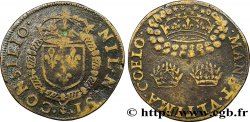
 Информация
Информация
